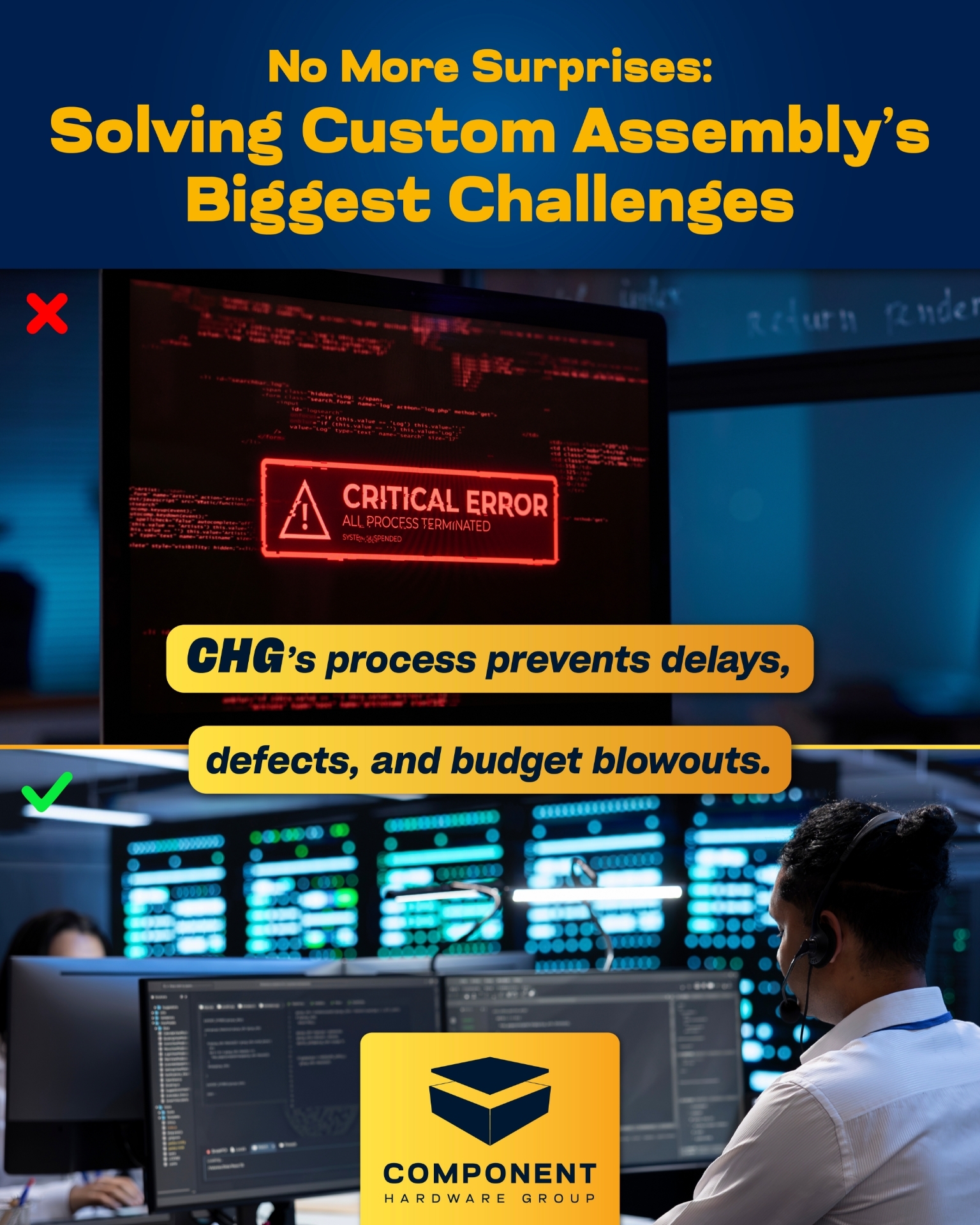
Custom assemblies are the backbone of many industries, from automotive to aerospace, where precision and reliability are critical. However, creating tailored assembly processes comes with its fair share of challenges. From material selection to precision issues, these hurdles can disrupt workflows, inflate costs, and compromise product quality.
The good news? Every challenge has a solution. In this article, we’ll explore the most common custom assembly challenges in manufacturing and provide actionable strategies to overcome them.
1. Material Selection: Balancing Cost, Durability, and Performance
The Challenge:
Choosing the right materials for custom assemblies is a balancing act. Manufacturers must consider cost, availability, performance, and compatibility with other components. Selecting suboptimal materials can lead to failures, increased maintenance costs, and customer dissatisfaction.
The Solution:
- Identify the operating environment of the product (temperature, stress, exposure to chemicals, etc.) to determine material requirements.
- Work with suppliers or material scientists to select materials that meet durability and performance needs while staying cost-effective.
- Use small-scale prototypes to test material performance under real-world conditions.
Advanced materials, like composites or alloys, may initially cost more but often reduce long-term expenses due to increased durability and reliability.
2. Precision Manufacturing Issues: Accuracy vs. Scalability
The Challenge:
In custom assemblies, precision is non-negotiable. Tolerances must be tight to ensure parts fit and function as intended. However, achieving high precision can be time-consuming and costly, especially at scale.
The Solution:
- Modern CNC machines, 3D printers, and automated inspection systems ensure consistent accuracy.
- Tools like laser scanners and CMMs (Coordinate Measuring Machines) help verify that components meet required specifications.
- For components requiring extreme accuracy, combine manual assembly with automated processes to balance precision and scalability.
3. Supply Chain Delays: Keeping Projects on Schedule
The Challenge:
Custom assemblies often involve sourcing specialized components, which can lead to supply chain bottlenecks. Delays in sourcing can halt production, extend timelines, and increase costs.
The Solution:
- Partnering with reliable suppliers ensures timely delivery of critical components.
- Avoid relying on a single supplier by establishing multiple sourcing options.
- Use predictive analytics to anticipate material needs and avoid shortages.
Maintain a buffer stock of critical components to absorb supply chain disruptions without halting production.
4. Quality Control Challenges: Ensuring Consistency Across Batches
The Challenge:
Consistency is key in manufacturing, but custom assemblies often involve smaller production runs, which can make maintaining quality across batches more difficult.
The Solution:
- Develop clear guidelines for assembly procedures and ensure all team members follow them.
- Use vision systems and AI-powered quality control tools to detect defects early in the process.
- Ensure your team is equipped with the skills needed to maintain quality at every stage.
Pro Tip: Document every step of the assembly process to ensure repeatability and make troubleshooting easier if issues arise.
5. Cost Management: Staying Within Budget
The Challenge:
Custom assemblies often require specialized tools, materials, and processes, making cost management a recurring concern for manufacturers.
The Solution:
- Simplify designs where possible to reduce production complexity and cost.
- Automated systems reduce labor costs and improve efficiency.
- Look beyond upfront costs to include maintenance, durability, and long-term savings.
6. Communication Gaps: Aligning Teams and Stakeholders
The Challenge:
Custom assembly projects often require input from multiple stakeholders—engineers, designers, suppliers, and clients. Poor communication can lead to misunderstandings, errors, and wasted resources.
The Solution:
- Use project management tools to ensure everyone is on the same page.
- Provide comprehensive specs, timelines, and expectations to all stakeholders.
- Schedule regular updates and meetings to address concerns early.
Encourage open communication across all levels of the project. A small clarification today can prevent costly mistakes later.
7. Adapting to Technological Changes: Staying Competitive
The Challenge:
The rapid pace of technological innovation means manufacturers must constantly evolve to stay competitive. However, adopting new technologies can be expensive and disruptive if not managed correctly.
The Solution:
- Pilot new technologies on a small scale before rolling them out across the operation.
- Provide employees with the necessary training to work with new tools and systems effectively.
- Work with technology providers who understand your industry and can help implement solutions seamlessly.
Stay informed about industry trends to identify which technologies offer the most significant ROI for your specific needs.
8. Environmental and Regulatory Compliance
The Challenge:
Manufacturers face increasing pressure to meet environmental standards and regulatory requirements. Non-compliance can result in fines, reputational damage, and loss of business.
The Solution:
- Identify areas where your operations may fall short of compliance standards.
- Incorporate eco-friendly materials and processes to meet regulations and appeal to eco-conscious customers.
- Assign a team or consultant to monitor changes in industry regulations and adapt accordingly.
Final Thoughts: Turning Challenges into Opportunities
Custom assembly challenges are inevitable, but with the right strategies, they can become opportunities for innovation and growth. By addressing these hurdles proactively, businesses can create more efficient processes, deliver higher-quality products, and maintain a competitive edge.
At CHG, we specialize in solving the toughest manufacturing challenges. Whether it’s precision manufacturing issues, supply chain disruptions, or cost concerns, we provide industrial assembly solutions that work.
Let’s work together to turn your custom assembly challenges into success stories. Contact us today to learn how we can help!





